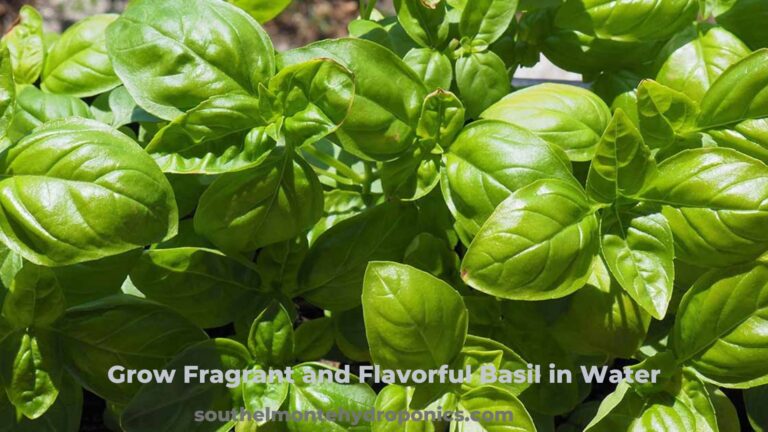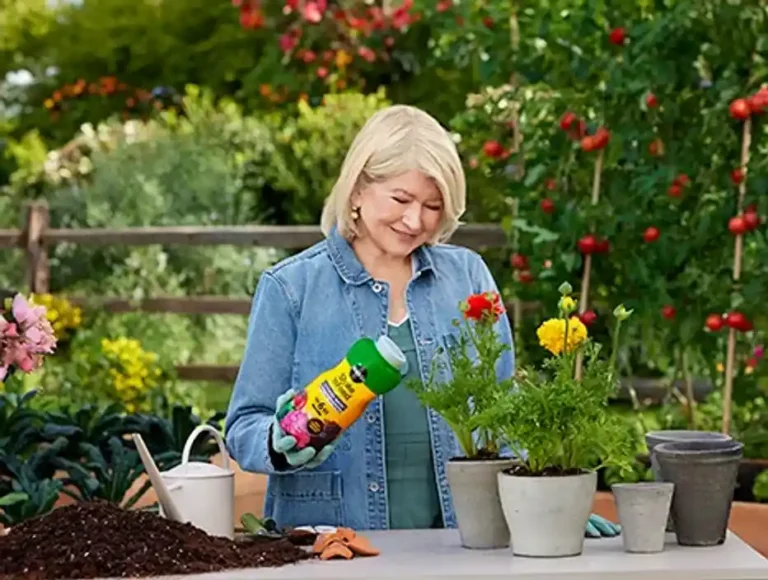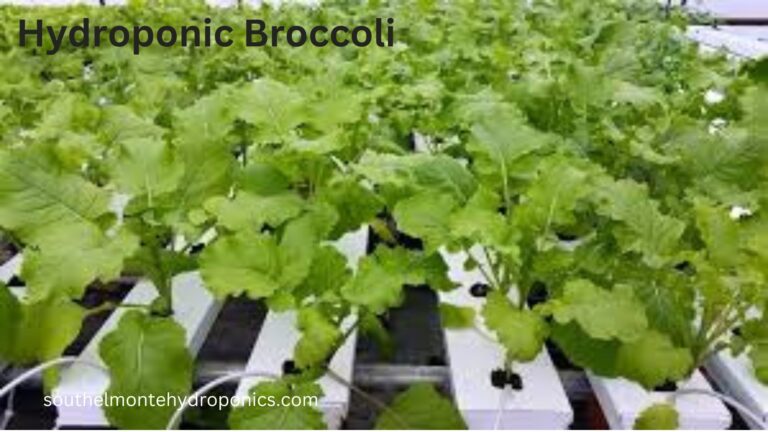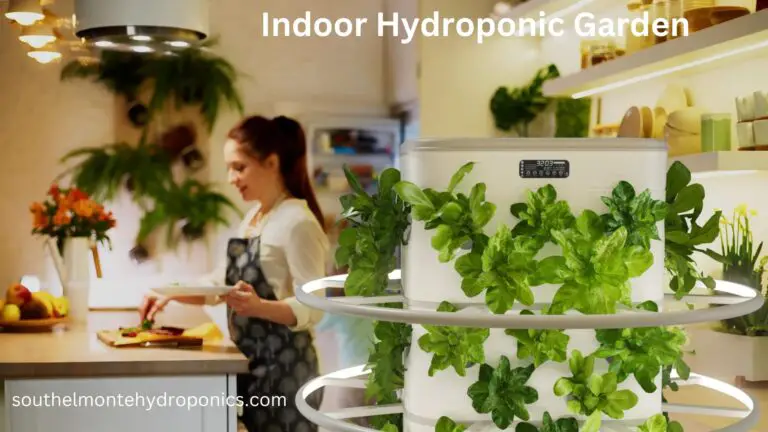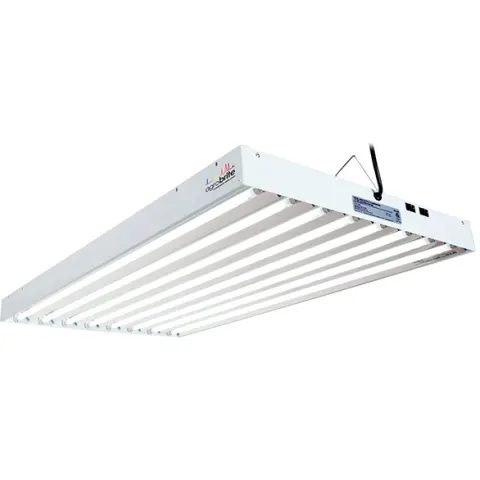Indoor Hydroponic Herb Garden: How to Grow Fresh and Flavorful Herbs at Home
Table of Contents
Understanding the Benefits of an Indoor Hydroponic Herb Garden
An indoor hydroponic herb garden offers numerous benefits to gardening enthusiasts. Unlike traditional soil-based gardening, hydroponics eliminates the need for soil, making it a cleaner and more convenient option. By using a water-based nutrient solution, plants can absorb essential nutrients directly, resulting in faster growth and higher yields. Additionally, hydroponics allows for precise control over environmental factors such as temperature, humidity, and lighting, ensuring optimal conditions for herb growth.

One of the key advantages of an indoor hydroponic herb garden is its space efficiency. With limited space being a common constraint for many gardeners, hydroponics provides a solution by allowing herbs to be grown vertically. This vertical farming technique maximizes the use of available space, making it possible to grow a wide variety of herbs in a compact area. Moreover, with the absence of soil, the risk of weed growth and pest infestations is greatly reduced, eliminating the need for harmful pesticides and herbicides.
In conclusion, an indoor hydroponic herb garden offers a range of benefits to gardening enthusiasts, including faster growth, higher yields, precise environmental control, and space efficiency. By embracing this innovative method of gardening, individuals can enjoy fresh and flavorful herbs year-round, right in the comfort of their own homes.
Selecting the Right Herb Varieties for Your Indoor Hydroponic Garden
When selecting the right herb varieties for your indoor hydroponic garden, it is important to consider a few key factors. First and foremost, you should take into account the size of your garden and the space available for each plant. Some herbs, such as basil and cilantro, tend to grow quite large and require more room to thrive, while others, like chives and mint, are more compact and can be grown in smaller spaces.
Additionally, consider the growing conditions required by each herb variety. Some herbs prefer cooler temperatures, while others thrive in warmer climates. Understanding the specific temperature and humidity needs of each herb will help ensure their optimal growth and productivity in your indoor hydroponic garden.

Furthermore, take into consideration your personal preferences and intended use for the herbs. Are you looking to grow versatile culinary herbs for cooking, or are you more interested in aromatic herbs for teas and natural remedies? By considering your preferences and intended uses, you can select herb varieties that will enhance your culinary experiences or cater to your desired aromatherapy practices.
By carefully selecting the right herb varieties for your indoor hydroponic garden, you can ensure a successful and bountiful harvest. Make sure to research each herb’s growth requirements and consider its size, temperature preferences, and intended use. With the right selection, your indoor herb garden will flourish, providing you with an abundant supply of fresh and flavorful herbs year-round.
Choosing the Ideal Location for Your Indoor Herb Garden
Choosing the ideal location for your indoor herb garden is crucial for the success of your plants. When selecting a spot, consider the following factors: sunlight exposure, temperature, and proximity to a water source.
First and foremost, sunlight is essential for the growth of herbs. Choose a location that receives at least six hours of direct sunlight daily. South-facing windows are often the best option as they provide the most light throughout the day. If natural light is limited, consider supplementing with artificial grow lights to ensure your herbs receive the necessary light for healthy development.
In addition to light, pay attention to the temperature of the chosen location. Most herbs prefer temperatures between 65°F and 75°F (18°C – 24°C). Avoid placing your indoor herb garden in areas that experience extreme temperature fluctuations, such as near drafty windows or heating vents. Consistent temperatures will promote optimal growth and prevent stress on your plants.
Lastly, consider the proximity of your chosen location to a water source. Indoor herb gardens require regular watering to maintain their hydration levels. Having a water source nearby will make it easier to tend to your herbs’ needs consistently without the hassle of transporting water across the house.
Setting Up the Hydroponic System for Optimal Herb Growth
When setting up your hydroponic system for optimal herb growth, there are several key factors to consider. The first is the choice of a suitable container for your herb plants. It is important to select a container that is spacious enough to accommodate the roots of your herbs and promote healthy growth. A popular option is a deep-water culture system, where the plants are suspended in nutrient-rich water.
Next, you’ll need to choose a nutrient solution that provides all the necessary elements for your herbs to thrive. This solution should be balanced and tailored to the specific needs of your plants. It is crucial to monitor the pH of the nutrient solution regularly, as fluctuations can affect the absorption of nutrients by the plants.
Lastly, ensuring adequate oxygen levels in the water is vital for the well-being of your plants. This can be achieved through the use of an air pump and air stones, which help in oxygenating the nutrient solution. Proper aeration promotes healthy root development and prevents the onset of diseases.
With these considerations in mind, a well-designed hydroponic system can offer optimal conditions for the growth of your herbs. By providing a suitable container, nutrient solution, and oxygenation, you are providing the foundation for healthy and thriving herb plants.
Providing Adequate Lighting for Your Indoor Herb Garden
To optimize the growth and productivity of your indoor herb garden, providing adequate lighting is crucial. Since most indoor environments do not receive sufficient natural sunlight, using artificial lighting becomes essential for the health and development of your herbs.
When it comes to selecting lighting for your indoor herb garden, LED (Light Emitting Diode) lights are highly recommended. LED lights offer several advantages for herb growth, including energy efficiency, long lifespan, and the ability to emit specific wavelengths of light that are essential for photosynthesis. The optimal color temperature for herb growth is between 4000K and 6000K, which falls within the range of cool-white to daylight LED lights.
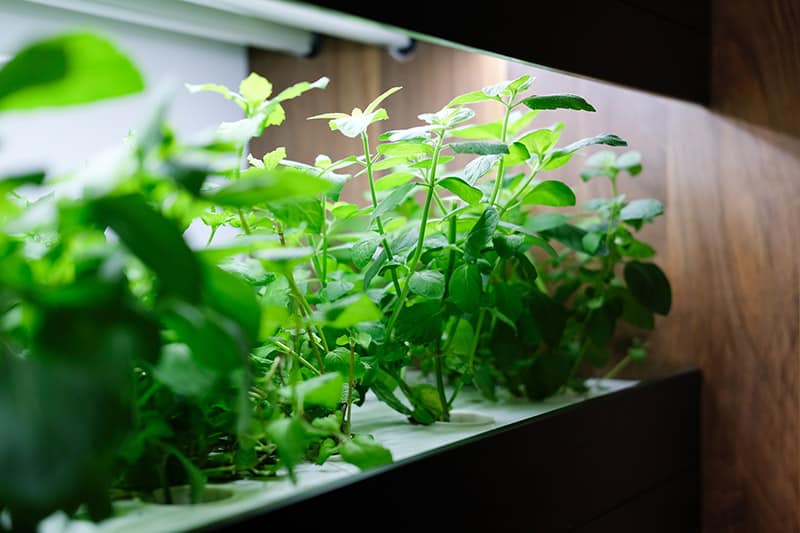
Positioning the lights is equally important. Hanging the LED lights approximately 12 to 18 inches above the herbs will ensure that they receive adequate light intensity without causing heat damage. It is also advisable to use adjustable hanging systems to maintain an appropriate distance as the herbs grow. To promote even and uniform growth, rotating the pots or trays regularly can help ensure that all sides of the herbs receive equal exposure to the light.
In conclusion, providing adequate lighting for your indoor herb garden is crucial for the successful growth and development of your herbs. LED lights offer the ideal solution, providing the necessary wavelengths of light for photosynthesis. By positioning the lights at the right distance and routinely rotating the pots or trays, you will create an optimal environment that promotes uniform growth and maximizes the potential of your indoor herb garden.
Maintaining the Right Temperature and Humidity Levels for Herb Growth
Maintaining the right temperature and humidity levels is essential for the optimal growth of herbs in your indoor hydroponic garden. Temperature directly affects plant metabolism, while humidity affects transpiration and water uptake. By controlling these factors, you can create an ideal environment that promotes healthy herb development.
For temperature, it is recommended to keep the temperature in the range of 65-75°F (18-24°C) during the day and slightly cooler at night. This temperature range provides the right conditions for photosynthesis, nutrient absorption, and overall plant growth. Using a thermostat or temperature control system can help maintain a consistent temperature within this range.
Humidity levels should also be carefully monitored. Most herbs thrive in moderate humidity, around 50-70%. Too much humidity can lead to fungal diseases, while low humidity can cause stunted growth and wilting. To maintain optimal humidity levels, you can use a humidifier or mist the plants regularly. Additionally, utilizing a hygrometer to measure humidity levels will help you make necessary adjustments.
Nutrient Solutions for Healthy Herb Development in a Hydroponic Garden
Nutrient solutions play a crucial role in the healthy development of herbs in a hydroponic garden. Unlike traditional soil-based gardening, where plants extract nutrients from the soil, hydroponic systems rely on nutrient-rich solutions to nourish the plants directly. These solutions consist of a carefully balanced blend of essential elements that herbs need to grow and thrive.
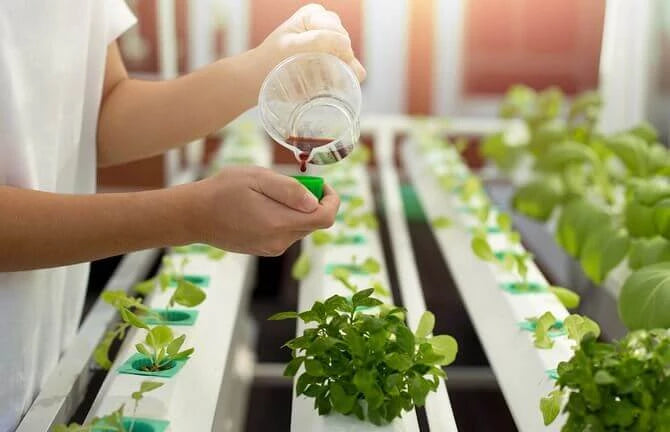
To provide optimal nutrition to your herbs, you must select a nutrient solution that meets their specific requirements. Different herbs have different nutrient preferences, so it is essential to choose a solution tailored to their needs. For instance, herbs like basil and parsley thrive in nitrogen-rich solutions, while others, such as rosemary and thyme, prefer a lower nitrogen content. By understanding the unique nutrient requirements of each herb variety, you can optimize their growth and maximize their flavor and aroma. It is also crucial to regularly monitor the nutrient levels in your hydroponic system and adjust the solution accordingly to ensure a balanced and healthy supply of your herbs.
Managing pH Levels in Your Indoor Hydroponic Herb Garden
Maintaining the proper pH levels in your indoor hydroponic herb garden is essential for the optimal growth and development of your plants. pH is a measure of the acidity or alkalinity of a solution, and different herbs thrive in different pH ranges. It is crucial to monitor and adjust the pH levels regularly to ensure that your herbs are receiving the right nutrients and can absorb them efficiently.
Most herbs prefer a slightly acidic to neutral pH range between 5.5 and 6.5. However, it is essential to note that each herb has its specific pH preferences, so it is crucial to research the ideal pH range for the specific herbs you are growing. Failure to maintain the proper pH levels can lead to nutrient deficiencies or toxicities, resulting in stunted growth, yellowing leaves, and poor overall plant health.
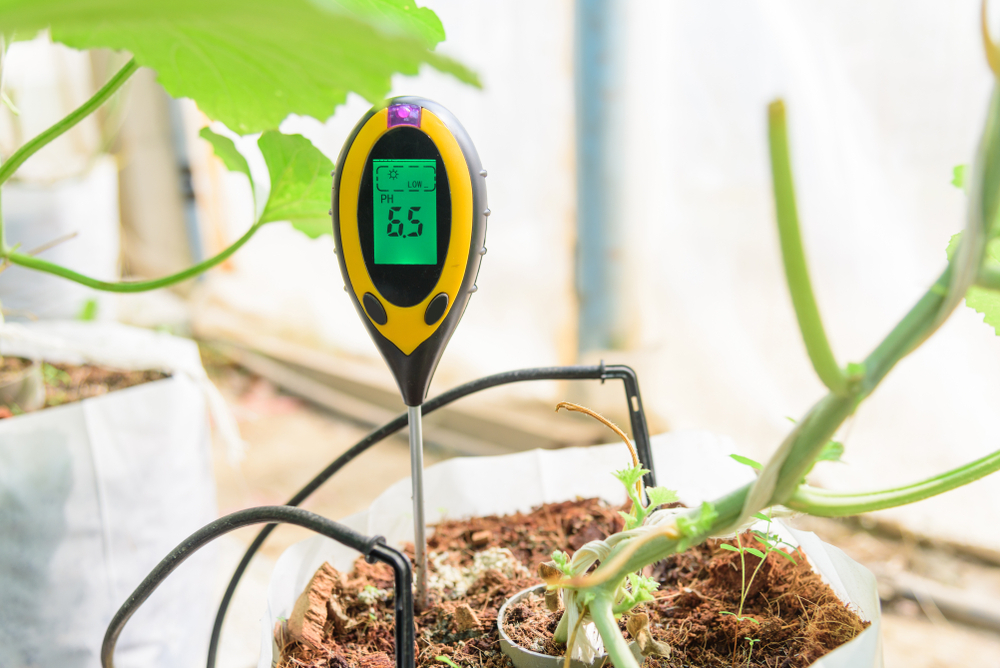
To manage pH levels effectively, you can use pH testing kits or digital pH meters to measure the acidity or alkalinity of the nutrient solution in your hydroponic system. If the pH is too high (alkaline), you can lower it by adding a pH-down solution, such as phosphoric acid. Conversely, if the pH is too low (acidic), you can raise it by adding a pH-up solution, like potassium hydroxide.
Regular monitoring and adjustment of pH levels are critical, as even slight fluctuations can have a significant impact on your herbs’ growth and development. Aim for a stable pH within the desired range to provide the optimal conditions for nutrient uptake. By managing pH levels effectively, you can help your indoor hydroponic herb garden thrive and produce an abundance of flavor-packed herbs for your culinary delights.
Watering and Feeding Schedule for Maximum Herb Productivity
To achieve maximum herb productivity in your indoor hydroponic garden, it is essential to establish a proper watering and feeding schedule. Both under-watering and over-watering can be detrimental to the growth and health of your herbs, so finding the right balance is crucial.
When determining the watering frequency, you need to consider the specific requirements of each herb variety as well as the environmental conditions in your indoor garden. As a general rule, it is recommended to water your hydroponic herbs when the top layer of the growing medium feels slightly dry. However, it is important not to let the roots dry out completely or sit in water for extended periods.
In terms of feeding, hydroponically grown herbs rely on nutrient solutions to provide them with the necessary minerals and vitamins. These solutions should be balanced and adjusted according to the growth stage of your herbs. During the vegetative phase, herbs typically require higher levels of nitrogen, while during flowering and fruiting stages, they may benefit from increased phosphorus and potassium levels. Following a feeding schedule specific to each herb variety will help ensure optimal growth and productivity.
Remember that the quality of water used for your hydroponic system is also crucial. Ideally, you should use filtered or purified water to prevent any potential contaminants from negatively affecting your herbs. Monitoring the pH level of the nutrient solution regularly is essential, as it can directly impact nutrient absorption. Aim for a pH range between 5.5 and 6.5 to maintain nutrient availability and avoid any nutrient deficiencies or toxicities.
By implementing a well-planned watering and feeding schedule, you can provide your indoor hydroponic herbs with the necessary hydration and nutrition they need for maximum productivity. The next step is to explore pruning and harvesting techniques that will further enhance the growth and flavor of your herbs.
Pruning and Harvesting Techniques for Indoor Herb Gardens
When it comes to pruning and harvesting techniques for indoor herb gardens, it is important to follow proper methods to ensure the health and productivity of your plants. Pruning is the process of removing unwanted or damaged parts of the plant, while harvesting involves collecting the mature leaves or stems for culinary or medicinal use.
For pruning, it is recommended to use clean and sharp pruning shears to make clean cuts and minimize damage to the plant. Start by removing any dead or yellowing leaves, as well as any stems that appear weak or diseased. This will improve air circulation and reduce the risk of fungal infections. Additionally, pruning can help shape the plant and promote new growth.
When it comes to harvesting, it is crucial to do so at the right time to ensure the maximum flavor and nutritional value of your herbs. Most herbs can be harvested once they have reached a certain size, typically when they have developed several sets of true leaves. To harvest, simply use a sharp pair of scissors or pruning shears to cut the leaves or stems just above a set of healthy leaves. Avoid harvesting more than one-third of the plant at a time, as this can weaken its growth. Regular harvesting will encourage the plant to produce new leaves, ensuring a continuous supply of fresh herbs for your culinary creations.
Dealing with Common Pests and Diseases in an Indoor Hydroponic Herb Garden
Common pests and diseases can pose a threat to the health and productivity of your indoor hydroponic herb garden. It is important to be vigilant and proactive in dealing with these issues to ensure the success of your gardening endeavors. One of the most common pests in indoor herb gardens is aphids. These tiny insects can quickly multiply and suck the sap from your plants, causing stunted growth and yellowing leaves. To combat aphids, you can introduce natural predators like ladybugs or lacewings to your garden, or use organic insecticidal soaps. It is also helpful to regularly inspect your plants for signs of infestation and promptly remove any affected leaves or plants to prevent the spread of aphids.
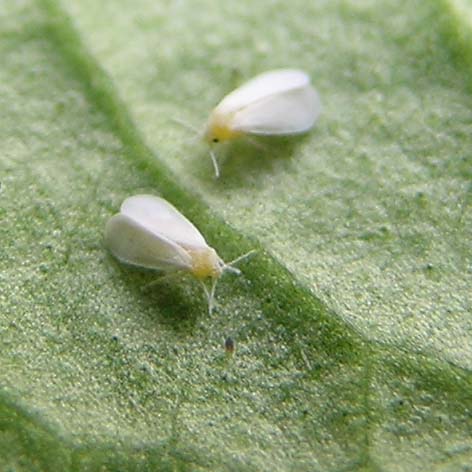
Another common pest is whiteflies, which can be controlled through yellow sticky traps or insecticidal soaps. Additionally, keeping the humidity levels in your garden under control can help deter the growth of mold and fungus, which are common diseases that can affect the health of your herbs. Regularly inspecting your plants for signs of mold or fungus and promptly removing any infected parts can help prevent the spread of these diseases. By staying vigilant and taking appropriate measures, you can effectively deal with common pests and diseases in your indoor hydroponic herb garden, ensuring the health and productivity of your plants.
Troubleshooting Tips for Common Issues in Indoor Hydroponic Herb Gardens
When it comes to indoor hydroponic herb gardens, there can be certain issues that arise. However, with the right troubleshooting tips, you can overcome these common challenges and ensure the optimal growth of your herbs.
One of the most common issues in indoor hydroponic herb gardens is nutrient deficiencies. Since plants rely on nutrient solutions rather than soil, it is important to maintain the right balance of nutrients. If you notice yellowing leaves or stunted growth, it may indicate a lack of essential nutrients. To address this, regularly check and adjust your nutrient solution based on the specific needs of the herbs you are growing. Regular water tests and monitoring nutrient levels in your system can help prevent deficiencies and promote healthy herb development.
Maximizing Space Efficiency in Your Indoor Herb Garden Setup
When it comes to setting up your indoor herb garden, maximizing space efficiency is key. With limited space available, it’s important to make the most of every square inch to ensure you can grow a variety of herbs for all your culinary needs.
One of the best ways to maximize space efficiency is to utilize vertical gardening techniques. By growing your herbs vertically, either on a wall-mounted system or using tiered shelves, you can make use of unused vertical space and have a larger herb collection within a compact area. This not only saves space but also creates an aesthetically pleasing display in your indoor garden.
In addition to vertical gardening, you can also consider using hanging baskets or window boxes to save space. These options allow you to grow herbs without taking up valuable floor or countertop space. Hanging baskets can be easily hung from the ceiling or wall-mounted hooks, while window boxes can be placed on windowsills or mounted outside the window frame. By utilizing these options, you can grow a variety of herbs without sacrificing space in your indoor herb garden setup.
Tips for Extending the Herb Growing Season in an Indoor Hydroponic Garden
To extend the growing season of your herbs in an indoor hydroponic garden, there are a few key tips that can make a significant difference. First and foremost, providing the right lighting is essential. Herbs require at least 12 to 16 hours of light each day to thrive, so investing in high-quality grow lights or LED panels is crucial. These will ensure that your herbs receive the necessary amount of light, even during the darker winter months.
Another important factor to consider when extending the growing season is maintaining optimal temperature and humidity levels. Most herbs prefer temperatures between 60 and 75 degrees Fahrenheit (15 to 24 degrees Celsius). Additionally, maintaining humidity levels between 40% and 60% can help prevent issues with mold or mildew. Using a humidifier or a dehumidifier, depending on your specific needs, can aid in creating the ideal conditions for your indoor herb garden.
| Tips for Extending Herb Growing Season Indoors | Key Strategies and Considerations |
|---|---|
| 1.Optimal Lighting Setup | – Full-Spectrum LEDs: Use full-spectrum LED lights for efficient photosynthesis. |
| – Adjustable Heights: Position lights at the right height for each growth stage. | |
| 2. Temperature and Humidity Control | – Stable Environment: Maintain consistent temperatures and humidity levels. |
| – Avoid Drafts: Protect herbs from drafts, which can stress plants. | |
| 3. Proper Nutrient Management | – Balanced Nutrients: Provide a balanced nutrient solution for optimal growth. |
| – Regular Monitoring: Check and adjust nutrient levels as needed. | |
| 4. Pruning and Harvesting Techniques | – Regular Harvesting: Harvest frequently to encourage new growth. |
| – Pruning for Bushiness: Prune to promote bushier plants and better light penetration. | |
| 5. Pest Prevention and Management | – Regular Inspection: Monitor for pests and address issues promptly. |
| – Natural Predators: Introduce beneficial insects for pest control. | |
| 6. Air Circulation | – Use Fans: Promote air circulation to strengthen plant stems and deter diseases. |
| – Avoid Stagnant Air: Prevent mold and mildew by ensuring proper air movement. | |
| 7. Growing Multiple Varieties | – Succession Planting: Rotate and replace plants to maintain a continuous harvest. |
| – Varied Harvest Times: Choose herb varieties with different maturation times. |
By implementing these tips, you can effectively extend the growing season of your indoor hydroponic herb garden. However, it’s essential to remember that each herb has its specific requirements, so it’s crucial to research the individual needs of the herbs you are growing. With the right lighting, temperature, and humidity control, you can enjoy a continuous supply of fresh, flavorful herbs year-round.
Exploring Creative Uses for Fresh Herbs from Your Indoor Hydroponic Garden
Fresh herbs are a delightful addition to any culinary creation, bringing vibrant flavors and enticing aromas to your dishes. With your indoor hydroponic herb garden, you have a readily available and abundant supply of these aromatic plants right at your fingertips. So, how can you explore the creative uses of fresh herbs to enhance your culinary endeavors?
One creative way to utilize your indoor hydroponic herbs is by infusing oils and vinegar. By combining your favorite herbs with oil or vinegar, you can create flavorful condiments that can be drizzled over salads, roasted vegetables, or used as a dip for crusty bread. Try experimenting with different herb combinations such as rosemary and garlic-infused oil or thyme and basil-infused vinegar. Not only will these infusions add depth of flavor, but they also make fantastic homemade gifts for friends and family who appreciate the art of cooking.
Another creative use for your indoor hydroponic herbs is in homemade herbal teas. Whether you’re looking for a soothing chamomile and lavender blend to help you relax before bed or a refreshing mint and lemon balm infusion to cool off on a hot summer day, your herb garden can provide the perfect ingredients. Experiment with different combinations to find the flavors that suit your taste buds best. Not only do these herbal teas offer a delicious alternative to traditional tea varieties, but they also provide potential health benefits, as many herbs have been used for centuries for their medicinal properties.
With your indoor hydroponic herb garden, the possibilities for exploring creative uses are endless. From culinary infusions to herbal teas, you can elevate your cooking and indulge in the flavors and scents of fresh herbs. So, let your imagination run wild in the kitchen and unlock the full potential of your indoor herb garden. Stay tuned for more exciting ideas and tips on maximizing your herb garden’s potential.
For more information watch the video:
What are the benefits of an indoor hydroponic herb garden?
Indoor hydroponic herb gardens offer numerous benefits, including year-round herb production, faster growth rates, higher yields, and the ability to control the growing conditions for optimal plant health.
How do I select the right herb varieties for my indoor hydroponic garden?
When choosing herb varieties for your indoor hydroponic garden, consider factors such as growth habits, taste preferences, and the amount of space available. Popular choices include basil, thyme, mint, parsley, and chives.
Where should I set up my indoor herb garden?
It is important to choose a location that receives adequate sunlight or artificial lighting, has good air circulation, and is easily accessible for maintenance tasks. Consider placing your indoor herb garden near a window or using grow lights for sufficient lighting.
How do I set up a hydroponic system for optimal herb growth?
To set up a hydroponic system for your indoor herb garden, you will need containers, a nutrient solution reservoir, a pump, and a method for delivering the nutrient solution to the plant’s roots. Follow the specific instructions provided with your hydroponic system for best results.
What lighting is needed for an indoor herb garden?
Indoor herb gardens require at least 12-16 hours of light per day. LED grow lights are a popular choice as they provide the necessary light spectrum for plant growth and can be adjusted to different intensities based on the plants’ needs.
How do I maintain the right temperature and humidity levels for herb growth?
Most herbs thrive in temperatures between 60-75°F (15-24°C). Proper air circulation and ventilation can help regulate temperature and humidity levels in your indoor herb garden. Use a humidity monitor to ensure humidity stays around 40-60%.
What nutrient solutions should I use for healthy herb development in a hydroponic garden?
There are various commercially available nutrient solutions specifically formulated for hydroponic herb gardens. Look for solutions that provide a balanced mix of essential nutrients like nitrogen, phosphorus, and potassium, as well as secondary and micronutrients.
How do I manage pH levels in my indoor hydroponic herb garden?
pH levels in hydroponic systems should be maintained between 5.5 and 6.5 for optimal nutrient uptake. Regularly monitor the pH levels using a pH meter or test kit and adjust them as needed using pH adjusters such as pH up or pH down solutions.
What is the watering and feeding schedule for maximum herb productivity?
Hydroponic herb gardens typically require more frequent watering compared to traditional soil gardens. Monitor the moisture levels in the growing medium and water as needed to keep it consistently moist. Feeding the plants with the nutrient solution should be done according to the manufacturer’s recommendations.
How should I prune and harvest herbs in an indoor herb garden?
Regular pruning helps maintain the shape and health of your herbs. Pinch off the tips of the branches to encourage bushier growth and remove any yellowing or damaged leaves. Harvest herbs by cutting the stems just above a leaf node, which will promote regrowth.
How do I deal with common pests and diseases in an indoor hydroponic herb garden?
Preventing pest and disease issues in indoor hydroponic herb gardens is crucial. Maintain cleanliness and hygiene by regularly inspecting plants, removing any affected leaves or plants, and using organic pest control methods such as neem oil or insecticidal soap if necessary.
What are some troubleshooting tips for common issues in indoor hydroponic herb gardens?
If you encounter issues such as nutrient deficiencies, pH imbalances, or slow growth, consider adjusting the nutrient solution concentration, pH levels, or lighting intensity. Consult the manufacturer’s guidelines or seek advice from a hydroponic gardening expert if problems persist.
How can I maximize space efficiency in my indoor herb garden setup?
Utilize vertical space by using hanging baskets or tiered shelving. Consider growing herbs that have similar growth habits or can be grouper to optimize space. Additionally, regularly prune and harvest your herbs to prevent overcrowding.
Are there any tips for extending the herb growing season in an indoor hydroponic garden?
To extend the herb growing season, ensure consistent lighting and temperature conditions. Adjust the lighting schedule to mimic the changing seasons and provide some cooler temperatures during the night. This can help simulate natural conditions and encourage continued growth.
What are some creative uses for fresh herbs from my indoor hydroponic garden?
Fresh herbs from your indoor hydroponic garden can be used in various creative ways, such as making infused oils, herbal teas, homemade herb butter, herb-infusvinegarars, or adding them to salads, soups, and various culinary dishes for enhanced flavors.

Kanike Sreekanth, a prolific writer at SouthElMonteHydroponics, brings a unique blend of creativity and scientific rigor to the table. With a degree in Horticulture from a prestigious institution, Kanike’s expertise spans hydroponic farming, plant biology, and agricultural sustainability. Their passion for exploring innovative cultivation methods and promoting environmental stewardship drives them to uncover new insights in the realm of hydroponics. Kanike’s writing serves as a conduit for sharing their knowledge and inspiring others to embrace alternative farming practices for a more sustainable future.


